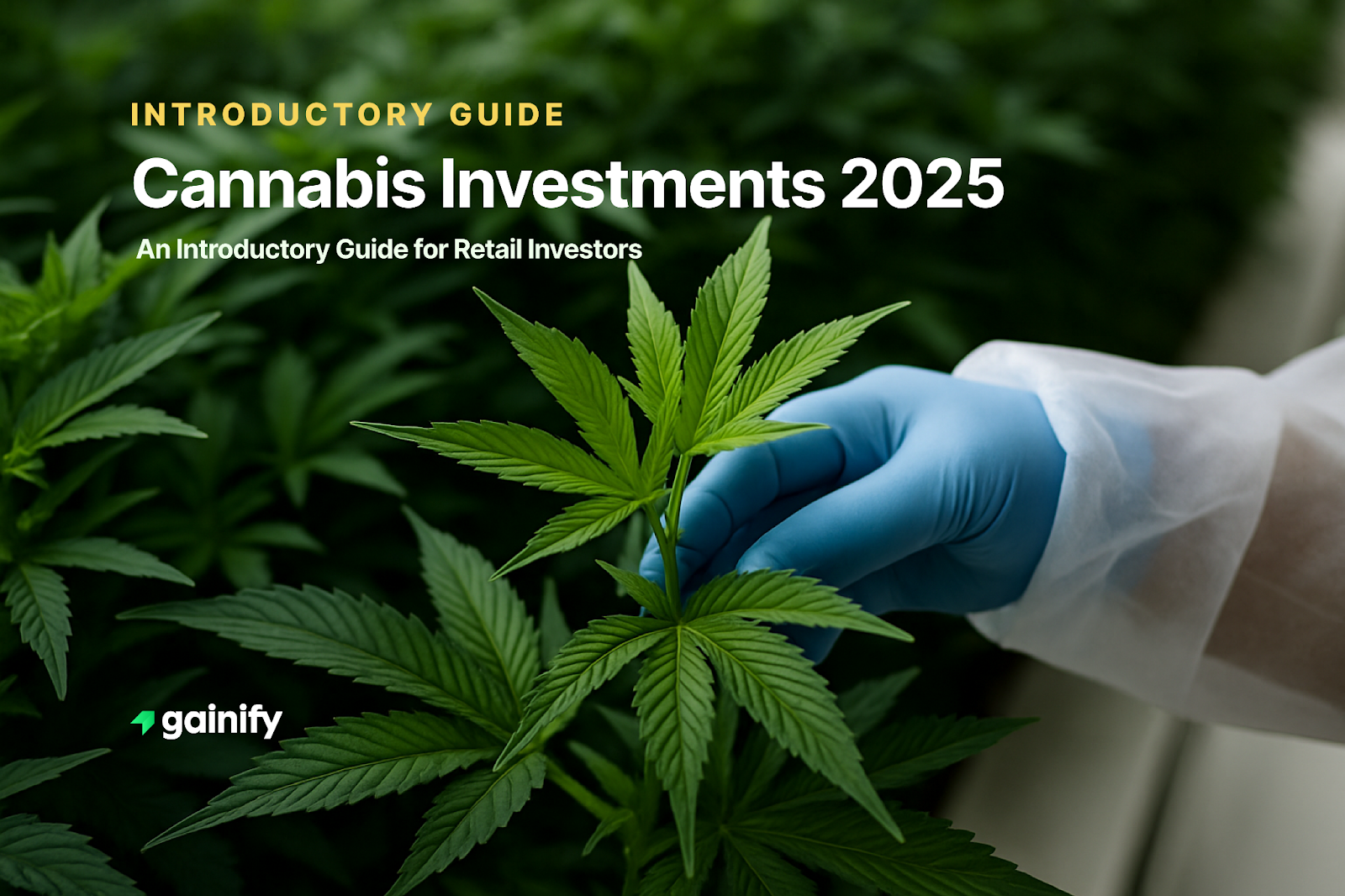The marijuana industry is undergoing a period of recalibration.
The cannabis sector, which includes businesses involved in cultivation, retail, pharmaceuticals, and ancillary services, has seen its market valuations fall significantly from their 2021 highs. Yet long-term growth potential remains strong. As federal and international regulations evolve, the landscape is shifting toward more professionalized, resilient business models.
In 2025, retail investors must navigate a fragmented Cannabis Legal Landscape where U.S. federal policy still classifies cannabis as a Schedule I drug under the Controlled Substances Act. This classification activates Internal Revenue Code Section 280E, which restricts standard tax deductions and inflates effective tax rates. Meanwhile, industry stakeholders await the potential Rescheduling of Cannabis to Schedule 3, a move that could unlock significant financial benefits and transform cannabis accounting.
This article offers a comprehensive breakdown of the cannabis investment universe, including company types, recent underperformance, strategic entry points, and key catalysts shaping the market. It also provides expanded analysis on international markets, public company financials, emerging sub-sectors, and nuanced valuation perspectives to help investors make well-informed decisions.
Understanding the Cannabis Sector
The cannabis sector spans several categories of companies, each offering different exposures and risk profiles. From direct plant-touching operators to pharmaceutical firms and real estate players, understanding this diversity is key to crafting a balanced cannabis investment strategy.
Multi-State Operators (MSOs)
These U.S.-based firms operate across multiple legal states, often managing the entire supply chain: cultivation, processing, and retail. MSOs tend to offer high growth potential but also face elevated legal and tax risks due to federal prohibition.
Examples:
Trulieve Cannabis Corp. (TCNNF)
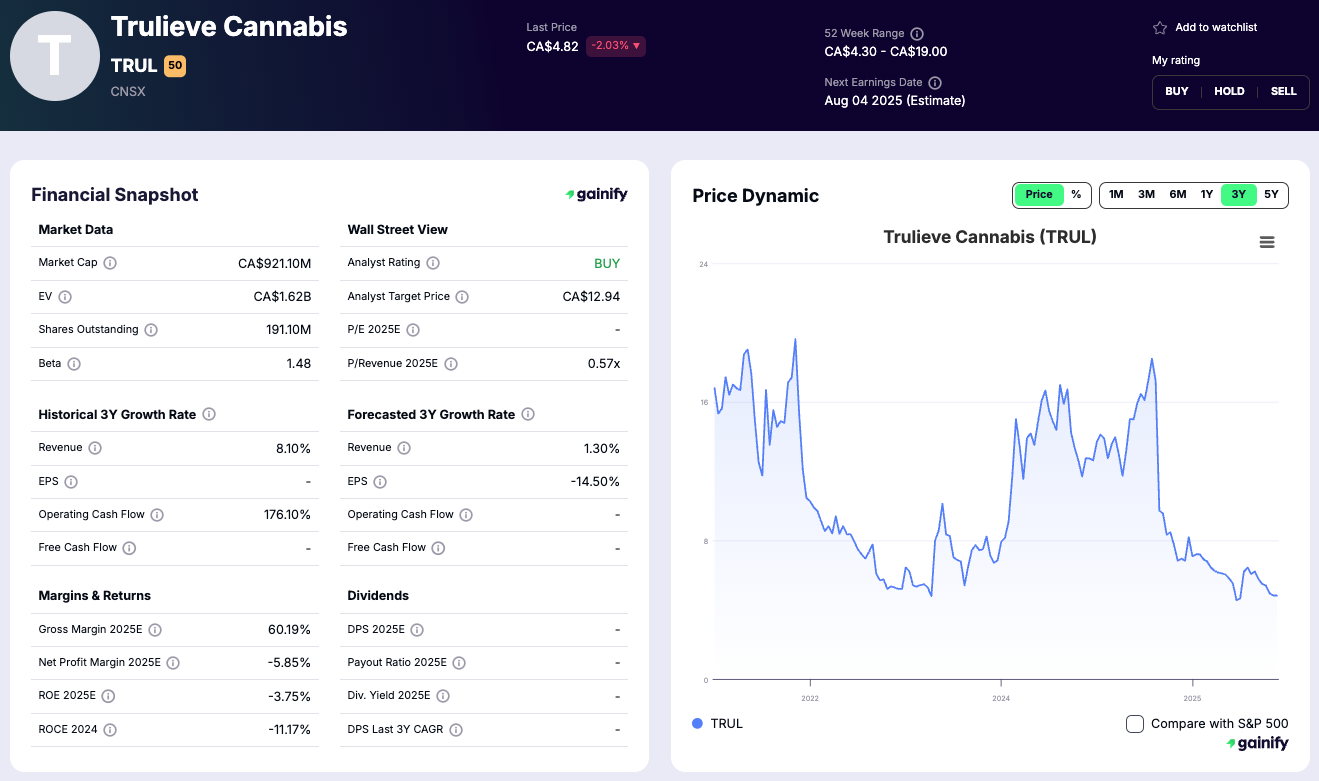
Curaleaf Holdings (CURLF)
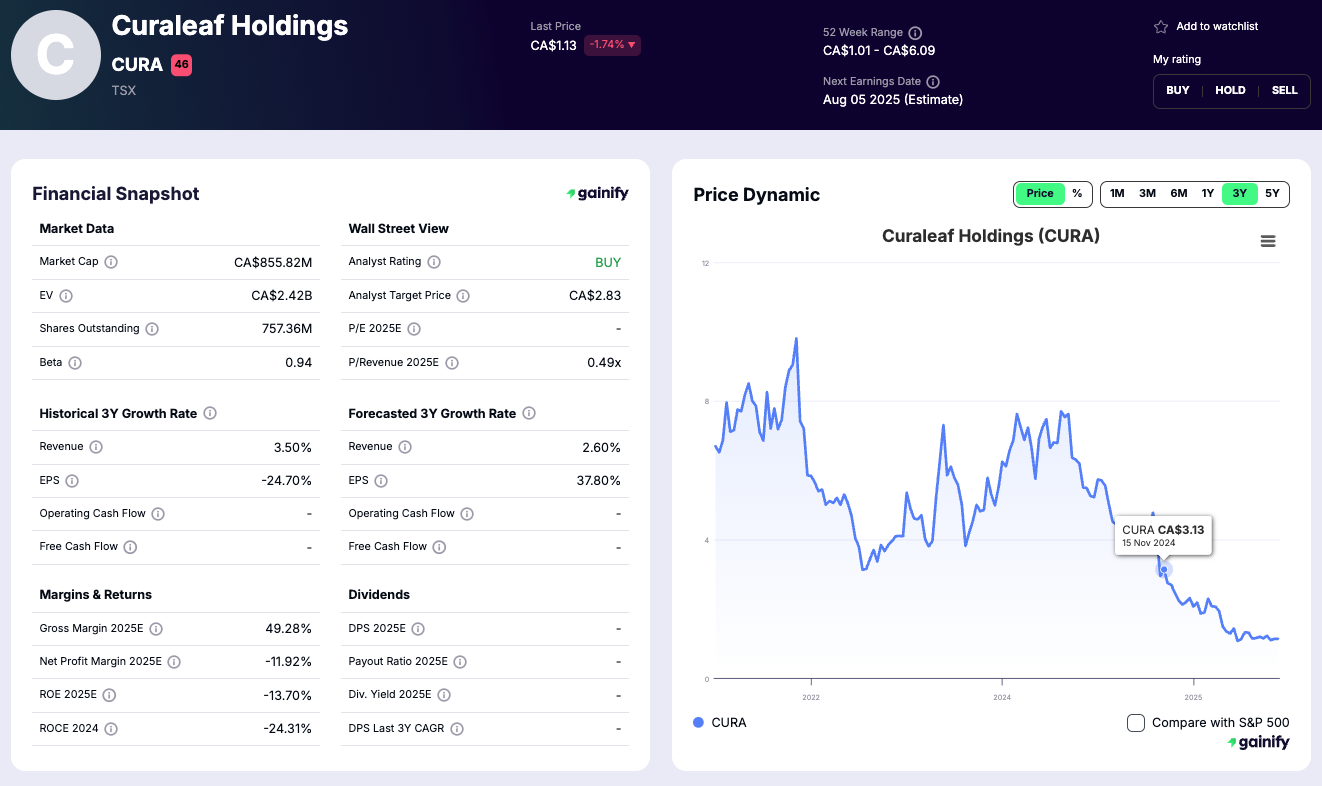
Green Thumb Industries (GTBIF)
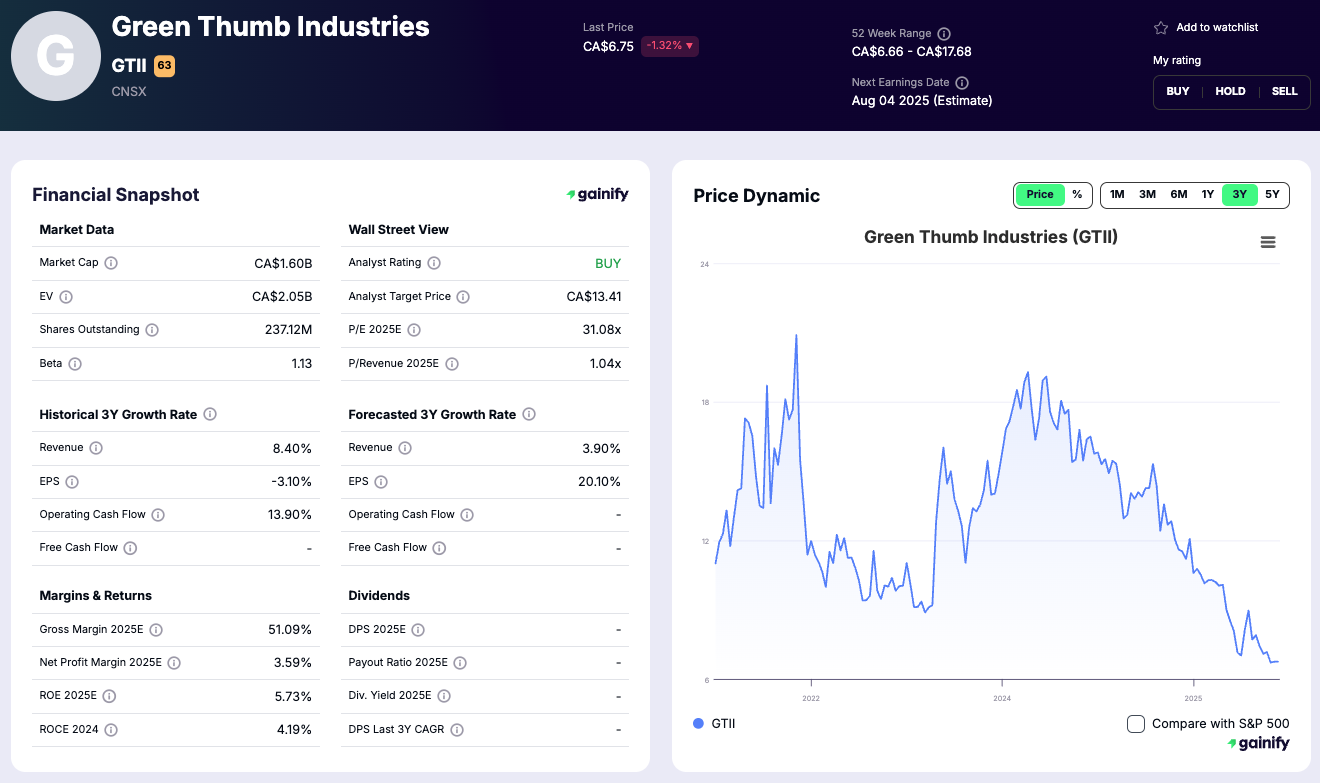
Cresco Labs (CRLBF)
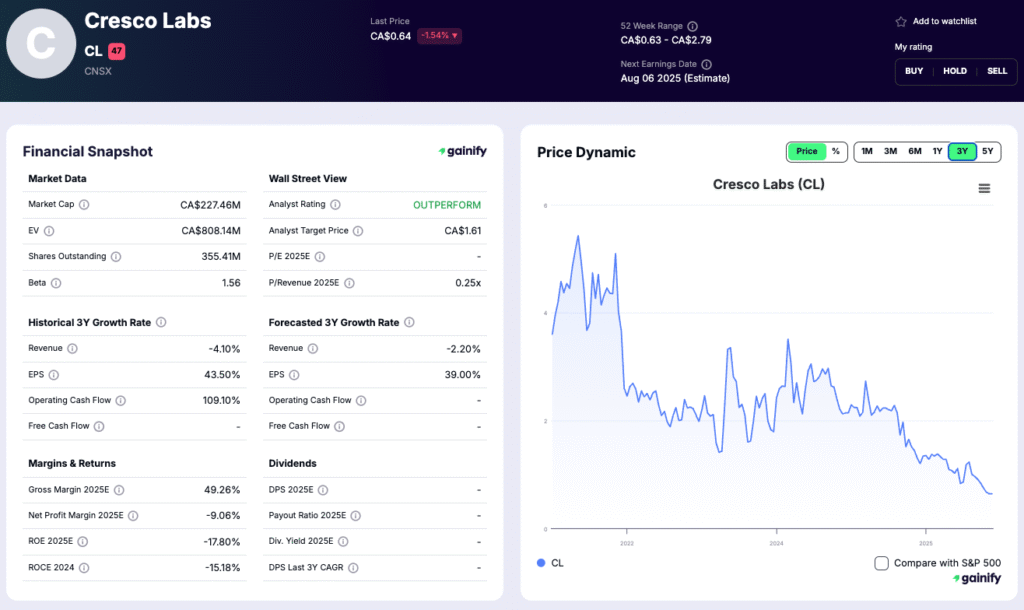
Licensed Producers & Pharma
Primarily based in Canada or the pharmaceutical sector, these firms enjoy clearer legal standing and often focus on export markets or clinical cannabis applications.
Examples:
Tilray Brands (TLRY)
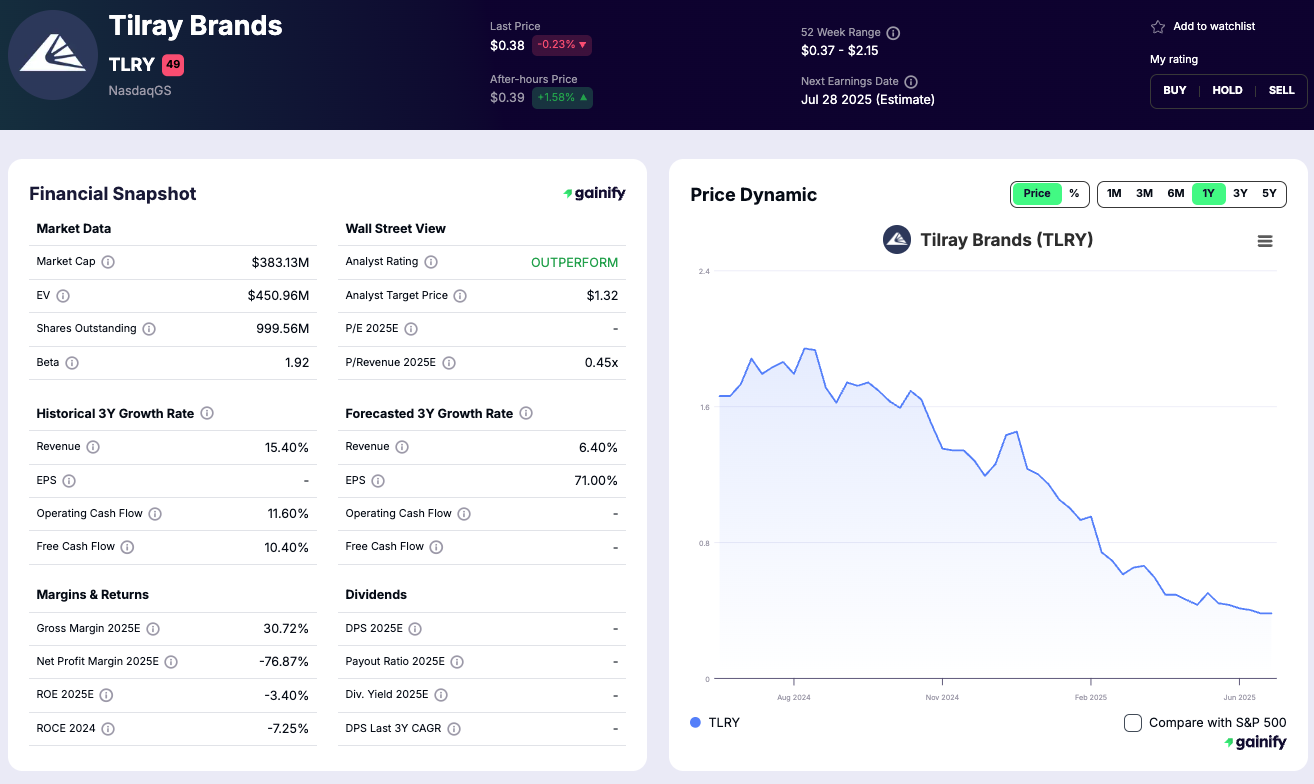
Aurora Cannabis Inc. (ACB)

Canopy Growth Corporation (CGC)
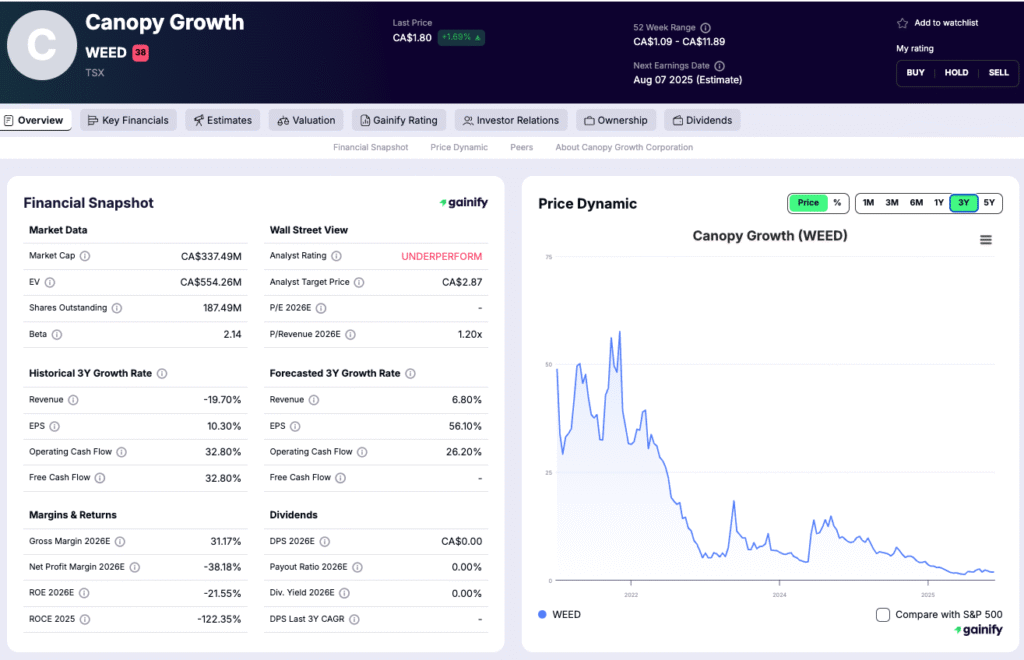
Cronos Group (CRON)
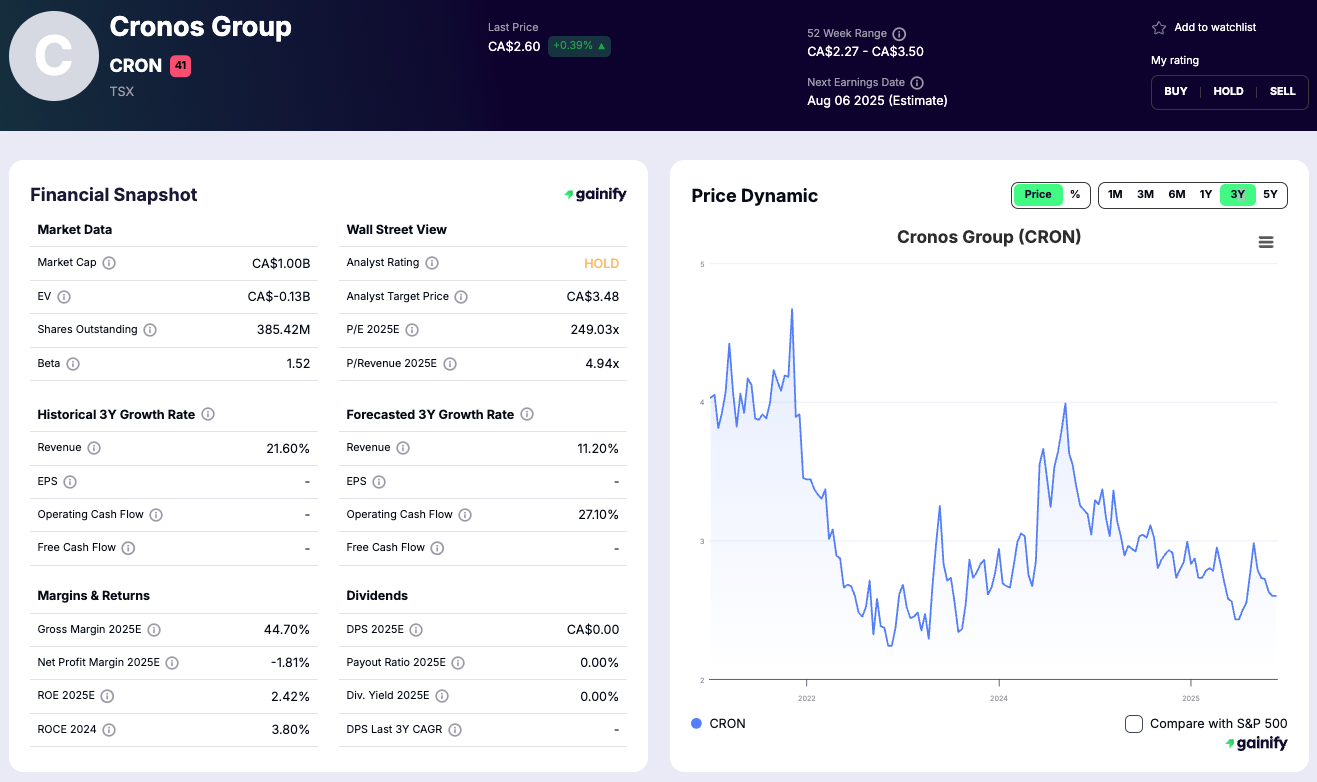
Ancillary & Real Estate Players
These businesses provide services, supplies, or infrastructure for the cannabis industry without directly handling the plant. They tend to be less exposed to regulatory risks and offer more stable revenue streams.
Examples:
- Innovative Industrial Properties (IIPR)
- GrowGeneration Corp. (GRWG)
- WM Technology (MAPS)
- Scotts Miracle-Gro (SMG)
ETFs & Investment Funds
Cannabis-focused ETFs allow investors to gain exposure across many cannabis stocks, offering diversification and convenience.
Notable ETFs:
- MSOS (AdvisorShares Pure US Cannabis ETF): This actively managed fund invests exclusively in U.S.-based multi-state operators (MSOs) and ancillary businesses. It provides focused exposure to the American cannabis market, which is currently the largest in the world by revenue potential. Holdings typically include companies such as Trulieve, Curaleaf, and Green Thumb. Since U.S. cannabis companies cannot be listed on major exchanges due to federal restrictions, MSOS uses total return swaps to gain access to these stocks.
- MJ (ETFMG Alternative Harvest ETF): MJ is one of the oldest and most recognized cannabis ETFs. It provides global exposure, including Canadian licensed producers, U.S. ancillary firms, and international operators. Its portfolio includes companies like Tilray, Aurora Cannabis, and Canopy Growth. The fund also holds tobacco and alcohol firms with ties to the cannabis space, giving it a broader vice-industry perspective.
- VICE (AdvisorShares Vice ETF): Although not purely focused on cannabis, VICE includes cannabis-adjacent businesses within a broader theme of controversial or “sin” industries. This includes alcohol, tobacco, and gaming companies, alongside hemp and CBD-related firms. The ETF is designed for investors looking for exposure to non-traditional, high-margin sectors, including emerging cannabis products and wellness categories.
Why Cannabis Stocks Have Lagged
The sharp underperformance of cannabis stocks since their 2021 highs is not simply a temporary dip. Many equities in the sector have declined more than 90 percent from their peaks, and in some cases, investor capital has been virtually wiped out. This collapse reflects deeper structural issues that go beyond short-term market sentiment:
- Federal prohibition in the U.S. remains the single most significant barrier to sector growth. Cannabis is still classified as a Schedule I drug, putting companies in violation of federal law despite operating legally at the state level. This status prevents access to standard banking services and subjects businesses to Internal Revenue Code Section 280E, which disallows normal business expense deductions. The result is artificially high tax burdens that eat into already thin profit margins.
- Oversupply in mature markets like California and Oregon has made matters worse. A glut of legal cannabis has driven wholesale prices to unsustainable lows, while illegal operators continue to undercut regulated businesses. In California, for example, the majority of cannabis is still sold through the illicit market, undermining licensed operators.
- Capital has dried up. Many companies raised money through aggressive equity offerings during the peak of market hype, but that window has closed. Now, firms are left with high-interest debt, deteriorating balance sheets, and limited options for raising fresh funds. The result has been widespread layoffs, asset sales, and in some cases, bankruptcies.
- To add to these challenges, cannabis companies must navigate unclear accounting rules and inconsistent financial disclosures. Section 280E complicates reporting and obscures the true financial health of many operators. This lack of clarity has reduced analyst coverage and discouraged institutional investment.
In short, the cannabis sector is not just correcting – it is undergoing a painful, overdue reckoning. Only companies with disciplined financial management, access to capital, and a path to profitability are likely to survive and eventually thrive in the next phase of market development.
U.S. vs. Global Cannabis Markets
The U.S. remains the largest and most influential cannabis market globally, driven by the size of its economy and the scale of domestic consumption. However, it is also among the most complex and fragmented. Cannabis regulation in the United States is determined largely at the state level, with 24 states legalizing adult-use cannabis and nearly all states allowing some form of medical cannabis. This patchwork approach has created operational inefficiencies, uneven enforcement, and substantial barriers to national scalability.
One of the most critical hurdles for U.S. cannabis operators is the continued federal classification of cannabis as a Schedule I substance under the Controlled Substances Act. This classification triggers Section 280E of the Internal Revenue Code, preventing cannabis businesses from deducting ordinary business expenses and resulting in disproportionately high effective tax rates. The potential rescheduling of cannabis to Schedule 3, currently under review, could mark a turning point by restoring tax parity and improving cash flow for legal operators.
Despite these regulatory headwinds, the U.S. market remains highly attractive due to its strong consumer demand, innovation in cannabis products, and ongoing state-level legalization momentum. States such as New York, New Jersey, and Connecticut are still in the early stages of adult-use rollouts, offering years of potential growth ahead. Meanwhile, larger and more mature markets like California and Colorado are recalibrating around oversupply issues and enforcement gaps.
International Cannabis Landscape
Outside the U.S., several countries have adopted more centralized and federally consistent cannabis policies.
- Canada was the first G7 nation to fully legalize adult-use cannabis at the federal level. While the initial boom led to overexpansion and price compression, Canada remains a cornerstone of the global cannabis trade, especially in terms of exports and capital markets access. Canadian licensed producers are active in European medical markets and have been among the first to establish global distribution infrastructure.
- Germany is spearheading the European cannabis transition. With medical cannabis already legal, Germany launched a phased pilot program for adult-use cannabis in 2024. This initiative allows for limited legal cultivation and distribution through cannabis clubs, with broader commercial sales expected in the future. Germany’s leadership is catalyzing regulatory reform across the EU, with countries like the Netherlands, Czech Republic, and Switzerland following closely behind.
- Latin America is emerging as a strategic production hub due to its favorable climate, lower labor costs, and export-friendly policies. Colombia, Uruguay, and Brazil are positioning themselves to supply GMP-compliant medical cannabis to global markets, particularly Europe and Australia. These countries are leaning heavily into the pharmaceutical cannabis model, focusing on research, extraction, and compliance with international standards.
Global markets offer the advantage of regulatory clarity and long-term scalability. However, they also face hurdles, including slow bureaucratic rollouts, physician hesitancy, and limited insurance coverage for medical cannabis. As international demand grows, especially in medical applications, companies with early international positioning and clinical expertise will be well positioned to capitalize on the next wave of global expansion.
Industry Trends & Valuation Outlook
The cannabis sector has undergone a substantial valuation reset since its speculative peak in 2021. While the correction has been painful, it has also brought more realistic pricing and a renewed focus on core business fundamentals. In 2025, investors are approaching the industry with greater scrutiny, demanding operational efficiency, positive cash flow, and regulatory clarity before deploying capital.
Valuations Remain Depressed but More Rational
Many U.S. multi-state operators (MSOs) are trading at deeply discounted multiples. Several are valued well below 2x forward sales, with a handful of firms such as Green Thumb Industries and Trulieve generating positive free cash flow. This divergence between distressed and fundamentally sound companies presents selective opportunity.
Schedule 3 Reclassification: A Potential Game Changer
The DEA is expected to conclude its review on cannabis rescheduling by the end of 2025. A move from Schedule I to Schedule 3 would allow companies to deduct normal business expenses under the tax code, potentially boosting EBITDA margins across the board. For profitable MSOs, this change would be transformative.
Product Evolution: Beyond THC
Consumer preferences are shifting. Demand for non-psychoactive cannabinoids like CBD and CBG is growing, especially in wellness, skincare, and beverage segments. These products face fewer regulatory hurdles and offer a broader appeal to health-conscious demographics, expanding the industry’s reach beyond traditional cannabis users.
Investment in Manufacturing and Supply Chain
Cannabis product manufacturing is rapidly maturing. Companies are investing in large-scale processing facilities, automated packaging, and CPG-style branding. This signals long-term confidence in regulated cannabis becoming a mainstream consumer category.
Where the Smart Money Is Looking
Not all cannabis investments offer the same risk-reward profile. Institutional and professional investors are focusing on resilient subsectors that demonstrate strong business models, clear regulatory pathways, and less exposure to federal enforcement risk.
1. Pharmaceutical Cannabis
Biotech companies such as Jazz Pharmaceuticals (via GW Pharmaceuticals) and Corbus Pharmaceuticals are advancing cannabis-based therapeutics through FDA approval pipelines. These firms operate under clear federal guidance and can access traditional capital markets.
2. Cannabis Real Estate
Innovative Industrial Properties (IIPR) is a cannabis-focused REIT leasing facilities to licensed producers. It benefits from long-term leases, triple-net agreements, and a lower legal risk profile by avoiding direct plant contact.
3. Ancillary Technology & Equipment
Companies like WM Technology (MAPS), GrowGeneration (GRWG), and Dutchie offer critical infrastructure without handling cannabis directly. These businesses provide data platforms, cultivation supplies, and point-of-sale systems, giving them scalability and legal insulation.
4. Governance and Reporting Quality
The smartest capital is flowing to companies with rigorous financial discipline. Transparent investor presentations, quarterly reporting, GAAP compliance, and clear communication are key factors that set these firms apart in a crowded field.
What to Watch and Consider
The next 12 to 24 months could significantly reshape the cannabis landscape. Retail investors should track the following developments closely:
- Progress on DEA rescheduling and the impact on corporate taxation
- Passage or advancement of the SAFER Banking Act, which could improve access to capital and banking services
- Upcoming state-level legalization votes, particularly in high-potential markets like Florida and Pennsylvania
- Ongoing industry consolidation, as underperforming operators are acquired or restructured
- Early signs of institutional capital re-entry, including strategic investments or ETF inflows post-regulatory changes
Final Thoughts
The cannabis market in 2025 is no longer defined by hype. It is increasingly shaped by fundamentals, regulatory reform, and operational discipline. The sector still faces meaningful barriers including federal illegality, restricted tax treatment under Section 280E, inconsistent access to capital, and inefficient supply chains. However, those same constraints are helping identify the next generation of winners.
Retail investors should resist the urge to speculate and instead adopt a structured, data-driven approach. A successful investment strategy in cannabis will focus on scalable business models, proven financial performance, and transparent governance.
To build a resilient portfolio, consider exposure across:
- U.S. multi-state operators (MSOs) with sustainable operations and leverage to future federal reform
- International producers with medical licensing, GMP-certified exports, and access to regulated markets
- Cannabis-focused REITs such as IIPR that generate stable cash flow without direct exposure to federal enforcement risk
- Ancillary service providers in technology, logistics, and packaging that enable growth across the supply chain
- Cannabis-based pharmaceutical firms that comply with regulatory frameworks and target clinically approved treatments
Selectivity is essential. Look for strong balance sheets, prudent capital management, experienced leadership teams, and companies that consistently communicate with investors. These attributes matter more than timing the market or chasing speculative names.
In a maturing and consolidating industry, patient capital will be rewarded. Cannabis investments can play a differentiated role in a diversified portfolio, but only when approached with a long-term horizon and a focus on substance over story.
Frequently Asked Questions (FAQ)
What is Section 280E and why does it matter?
Answer: Section 280E of the Internal Revenue Code prevents cannabis companies from deducting normal business expenses due to federal illegality. This results in inflated tax burdens and reduced profitability.
What would rescheduling to Schedule 3 change?
Answer: Moving cannabis from Schedule I to Schedule 3 would eliminate the limitations of 280E, allowing companies to deduct standard expenses and potentially boosting profit margins and investor sentiment.
Why are cannabis stocks underperforming despite industry growth?
Answer: Stock underperformance is largely due to regulatory uncertainty, capital access issues, oversupply in key markets, and investor fatigue from unfulfilled reform expectations.
Is it safer to invest in cannabis ETFs than individual stocks?
Answer: ETFs like MSOS or MJ offer diversified exposure and help mitigate single-stock risk, making them suitable for investors who prefer a broader approach.
Which companies are best positioned for growth?
Answer: MSOs like Trulieve, Green Thumb, and Curaleaf show strong fundamentals, while ancillary players like IIPR and MAPS offer stability. Pharma firms such as Jazz and Corbus may benefit from clinical advancements.
How should I approach investing in cannabis in 2025?
Answer: Adopt a long-term perspective, diversify across sub-sectors, stay informed about regulatory changes, and focus on financially sound businesses with transparent operations.
